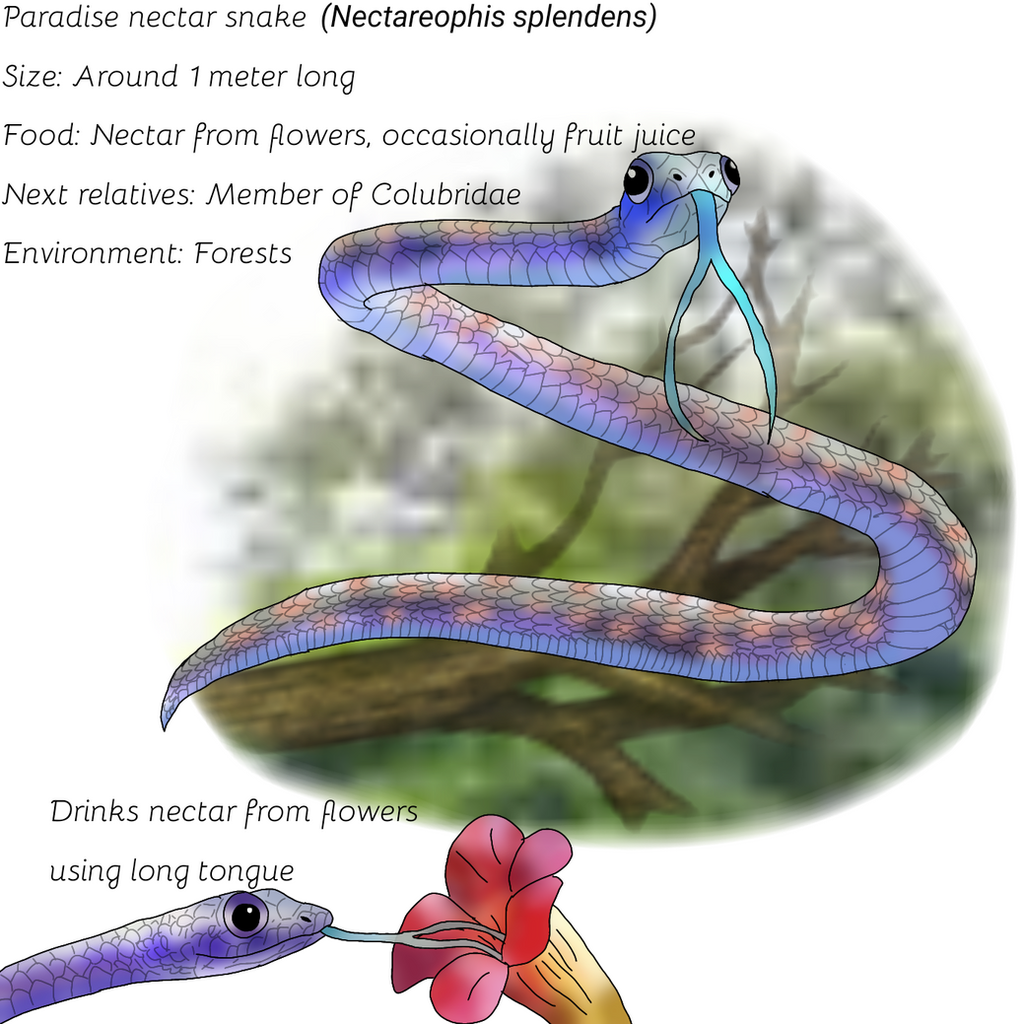HOME | DD
 Olmagon — Paradise nectar snake
Olmagon — Paradise nectar snake

#nectar #bronzeback #sunbeamsnake #colubridae #paradisenectarsnake #digitalart #digitaldrawing #digitalillustration #digitalpainting #hummingbird #iridescent #lostworld #purple #reptile #snake #speculative #thelostworld #speculativeevolution #speculativebiology #spectember #speculativezoology #lostworld2020 #lostworldspecchallenge
Published: 2020-09-15 06:47:34 +0000 UTC; Views: 7556; Favourites: 184; Downloads: 8
Redirect to original
Description
Another entry for the Lost World Spec Challenge by Hyrotrioskjan , because he said you can add as many entries as you want and I am not stopping at that sky sloth.While all other species of snakes are carnivorous, one species in the Maple-White Land has evolved a different diet. By taking on a diet of nectar from the abundant flowers of the tropical South American tepui, the paradise nectar snake (Nectareophis splendens) has found a food source that it does not have to compete with other snakes for, although hummingbirds would also feed from the same plants. The paradise nectar snake is a colubrid snake endemic to the Maple-White Land and uses its long, forked tongue (long even for a snake) to access the deepest parts of flowers and drink their nectar, occasionally taking fruit juice as well, and is effectively a reptile that has taken the ecological niche of a hummingbird. But while the hummingbird has to feed very frequently due to its fast metabolism, the paradise nectar snake is cold-blooded and only needs to feed much less frequently, and while some hummingbirds can only feed from one kind of flower, the snake is more of a generalist that can drink from most flowers. Like the hummingbirds it do-exists with, this snake is brightly coloured. Its scales are iridescent like those of the sunbeam snake from Asia and come in shades of blue and purple, and even its tongue is bright neon blue. These snakes are diurnal and arboreal, living in trees and have prehensile tails to grab onto a branch as they dangle towards a flower to feed from it. This snake is non-venomous, but when threatened it can still bite back and has sharp teeth despite its liquid diet, which are probably traits left behind from a predatory ancestor.
Flower in the bottom drawing is based on this: www.pinterest.com/pin/14700037…. I don’t know what flower that is.
Related content
Comments: 20

👍: 0 ⏩: 1

👍: 0 ⏩: 0

I guess a Egg-Eating snake could evolve into this!
👍: 0 ⏩: 1

👍: 0 ⏩: 1

👍: 0 ⏩: 0

👍: 0 ⏩: 1

👍: 0 ⏩: 0

👍: 0 ⏩: 1

👍: 0 ⏩: 1

👍: 0 ⏩: 0

👍: 0 ⏩: 1

👍: 1 ⏩: 1

👍: 0 ⏩: 1

👍: 0 ⏩: 1

👍: 0 ⏩: 0

👍: 1 ⏩: 1


























